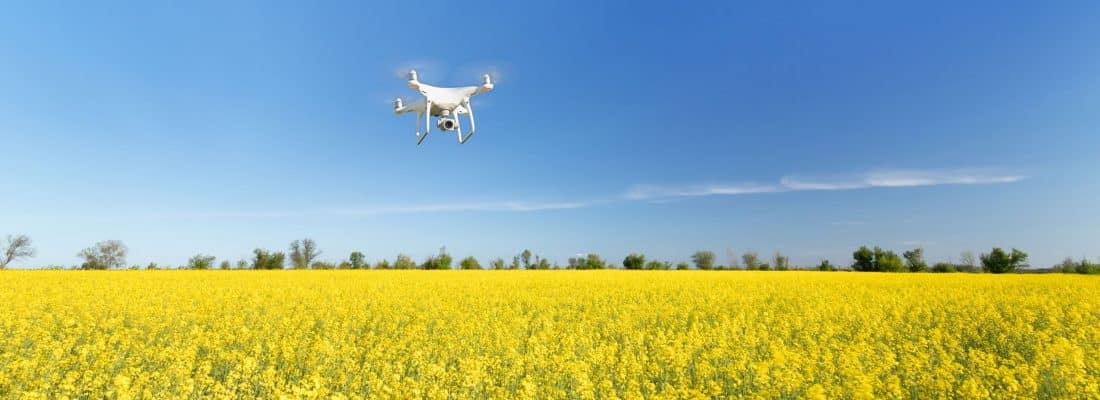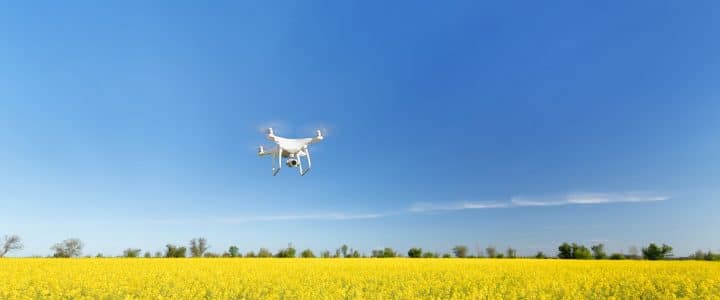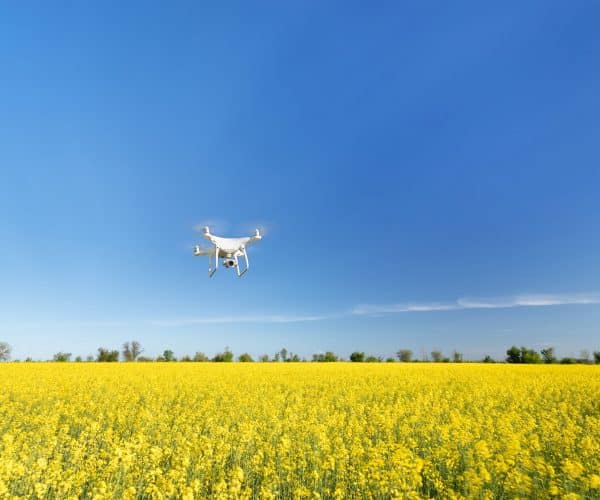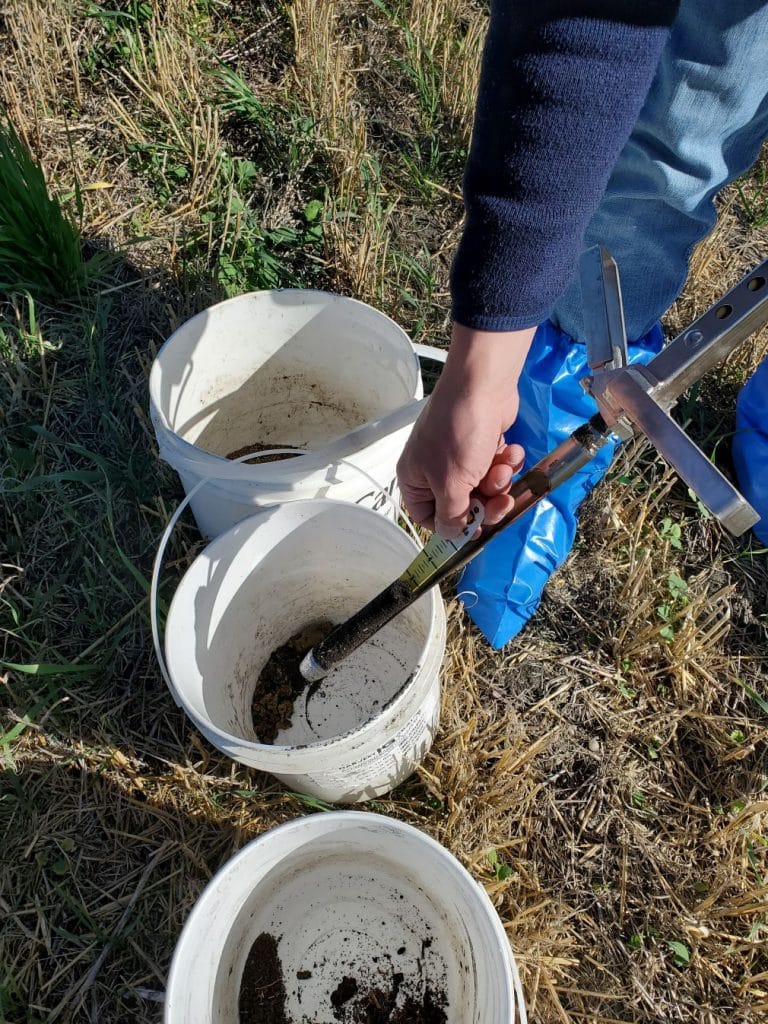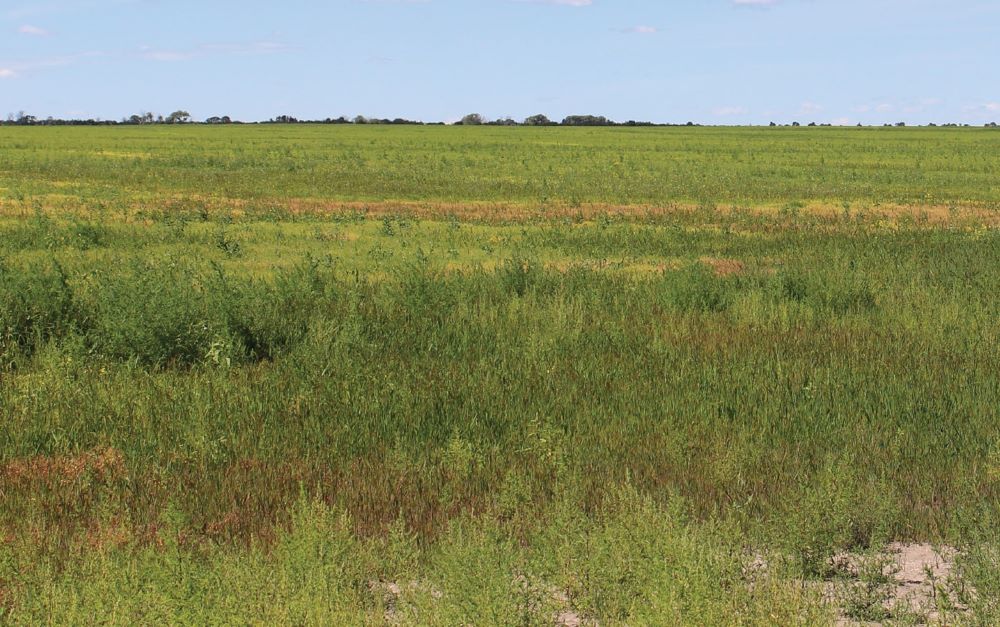- 1 Important tips for best management
- 2 Precision agriculture toolkit
- 3 Guidance and auto-steer
- 4 Real time kinematic (RTK)
- 5 Automatic sectional control
- 6 Soil sampling and 4R nutrient stewardship
- 7 Grain nutrient and tissue analysis
- 8 Variable rate prescription maps
- 9 In-season imagery
- 10 In-season application and harvest yield mapping
- 11 Spot spraying
- 12 Re-wilding unproductive acres
- 13 Future developments
Precision agriculture includes an array of strategies that measure and address temporal and spatial variability to improve overall production sustainability (including improved efficiency, productivity, and profitability). It may involve equipment, knowledge, or strategies to optimize the use of inputs and increase the control (or intentional management) of targeted portions of a field. Precision agriculture continues to grow and develop over time. While some of these tools are staples for producers, some are not being applied to their fullest potential.
Important tips for best management
- Use available data sources (such as weather stations, in-cab hardware, field sensors, predictive modelling, prescription maps and other values being measured) to consider the variability in any aspect of an operation and develop a plan to reduce it.
- Good recordkeeping and quality data are very useful for both benchmarking and tracking success.
- Assess your fields
- One place to start is by delineating between productive and unproductive (unprofitable) acres. Consider which consistently unproductive or unprofitable areas of a field (ex. saline, too wet, too dry etc.) can be removed to boost profitability. Then make that adjustment and consider implementing best management practices for re-wilding unproductive acres to maximize their value.
- For variable rate technology (VRT) fertilizer practices:
- Use soil tests and other methods to set nutrient rates that align with soil reserves, match crop removal and are sufficient to achieve target yield.
- Test higher nitrogen rates using a few test strips to see if it improves yield and profitability.
- Use other 4R nutrient stewardship to reduce losses and improve nutrient use efficiency.
- Sign up to be recognized for 4R practices.
- Evaluate variable rate technology options to see how it could improve nutrient use efficiency and profitability for all acres.
Precision agriculture toolkit
Precision agriculture can be simple (which is likely best when first getting into it) or more complex, with varying levels of adoption. It generally involves using field-level information to help measure variability, manage operations more effectively and make on-farm decisions in real time. Precision agriculture can be utilized for a range of topics, including seeding, fertilizer applications, pesticide applications, nutrient mapping, aspects of harvest operations, and more. The implementation of every precision agriculture strategy or technique is like another tool in the toolkit to help manage field variation and increase crop production efficiency (by improving production, sustainability, and profitability).
Some aspects or tools of precision agriculture include:
- Guidance and auto-steer
- Real time kinematic (RTK)
- Automatic sectional control
- Soil sampling and 4R nutrient stewardship
- Grain nutrient and tissue analysis
- Variable rate prescription maps
- In-season imagery
- In-season application and harvest yield mapping
- Spot spraying
- Re-wilding unproductive acres
Guidance and auto-steer
Guidance technologies are widely adopted, with 98 per cent of farmers in Western Canada using some sort of GPS (global positioning system) guidance on their farms and 79 per cent using GPS auto-steer1. The adoption of the GPS guidance for farm equipment occurred very quickly, with immediate paybacks on efficiency and productivity, and it continues to be utilized.
These precision agriculture tools can increase efficiency for operators during in-field activities by reducing overlaps and skipped areas in the field, which can contribute to overall improved economic and environmental efficiencies.
Real time kinematic (RTK)
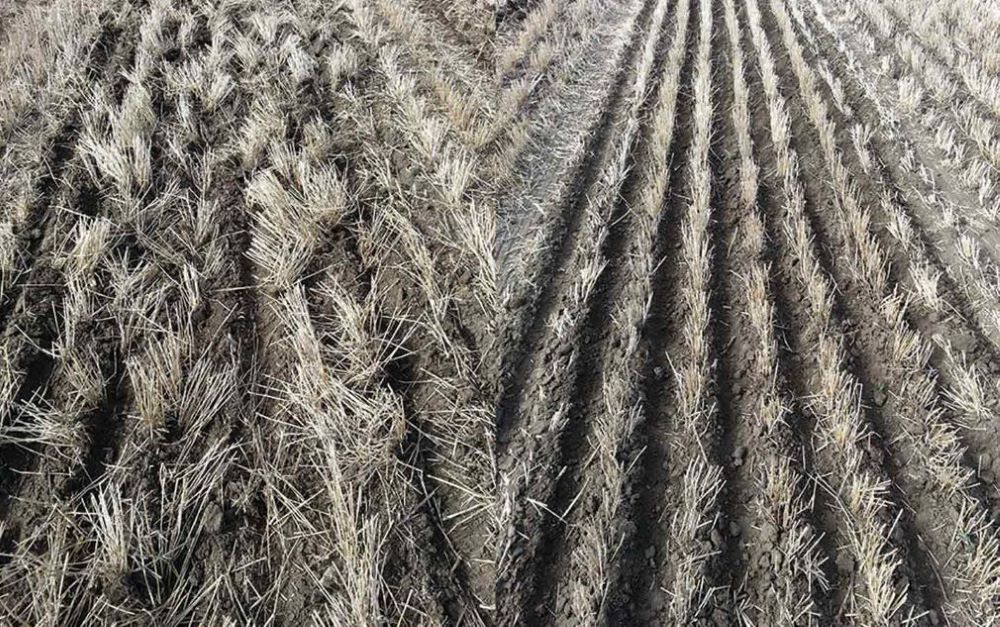
Real time kinematic (RTK) GPS auto-steer technology provides improved repeatability to help canola growers improve the precision of equipment guidance and have the option of employing controlled traffic farming (CTF) practices. For example, highly accurate GPS auto-steer can provide producers the ability to seed between the rows of stubble from previous crops. This practice may allow for improved canola emergence (and potentially even improved germination) due to more accurate seed placement, improved seed-to-soil contact, a more favourable microclimate, higher soil temperatures and improved seedling protection from more standing stubble. As a result, producers with the ability to inter-row seed may enhance plant stands and protect against yield loss, without increasing seed costs.((Whetter, Jay. 2015. Seeding between rows improves stand establishment. Canola Digest (Science edition). Available online as of December 2021.))
Automatic sectional control
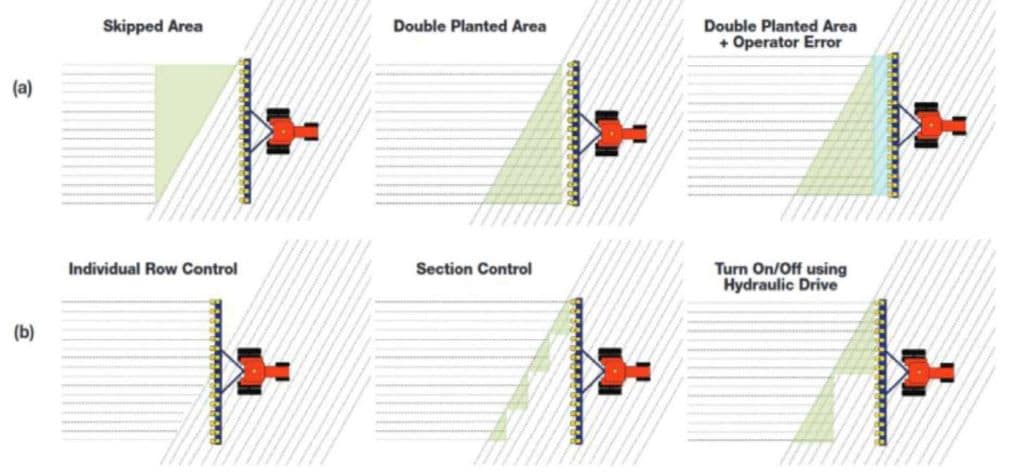
Brooke, 2014), which is referenced in the Evaluation of emission reductions and cost saving in sectional control air seeders, drills and sowing equipment across the Canadian Prairies study
Sectional control technology on application equipment allows segments (or sections) of the equipment to act independently instead of as one cohesive unit, such as turning off the application of a product (ex. a pesticide) in one segment, while the other segments continue to apply product. This can be done in such a way to ensure areas of the field that have already received one application don’t receive a second application (when navigating large equipment around corners and various obstacles in the field), which decreases the total amount of product used in the field.
Implementing this technology, which has been done by 73 per cent of growers in Western Canada for spray applications,((Dale Steele. 2017. Analysis of Precision Agriculture Adoption and Barriers in western Canada April (final report). Prepared for Agriculture and Agri-Food CanadaAgriculture and Agri-Food Canada is a department of the Government of Canada. More. Available online as of December 2021.)) can result in reduced application expenses (increased profitability) and reduced environmental losses while maintaining (or potentially improving) crop growth and potential seed yield and quality. In addition, this automation improves efficiency, as the operator does not need to focus on manually turning the implement sections off and on to achieve the benefits from executing this.
A researcher estimated the degree of overlap (the area of a field that farm equipment will pass over more than once during a regular field operation) for seed and fertilizer could be as high as eight per cent across the Prairies,((Nevin Rosaasen. 2020. Sectional Control Technologies – From 8% Overlap to 1% or Less. 2020 Research Report Sectional Control Story. Albert Pulse Growers.)) suggesting there is a strong need for this technology.
For research on the impacts of sectional control, see ‘Phase 1’ and Phase 2 of Alberta Pulse Growers’ ‘Evaluation of emission reductions and cost saving in sectional control air seeders, drills and sowing equipment across the Canadian Prairies’ project featured on the Canola Research Hub.
Soil sampling and 4R nutrient stewardship
Soil testing provides the most accurate estimate of what nutrients are available in the soil. From this information, a grower can better calculate the field’s nutrient requirements which will need to be applied to reach the target yield for a specific crop (such as canola). For effective management of nutrient resources and to maximize efficacy of the nutrients being applied, it is recommended to soil sample and to follow 4R Nutrient Stewardship, which includes applying the Right source of fertilizer at the Right rate, the Right time and in the Right place.((Dale Steele. 2017. Analysis of Precision Agriculture Adoption and Barriers in western Canada April (final report). Prepared for Agriculture and Agri-Food CanadaAgriculture and Agri-Food Canada is a department of the Government of Canada. More. Available online as of December 2021.))2
While each of the ‘4Rs’ are important, if the Right rate (using the correct amount of fertilizer to achieve the desired yield target) is not followed, the Right source, Right time and Right place will not be able to compensate. In addition, if applications rates do not match crop nutrient removal rates, nutrient shortages could be a concern.
Ideally, it is best to treat each field independently when determining the Right rate.
For on this topic, see the 4R Nutrient Stewardship Practices section.
Grain nutrient and tissue analysis
To develop a more precise understanding of crop nutrient use, regularly monitor the crop and submit tissue samples during the growing season and grain samples at harvest for nutrient analysis. Collecting tissue samples on a weekly schedule will indicate nutrient levels in the plants at different points throughout the season as well as a total uptake value.
Evaluating weekly tissue samples in correlation to accumulated growing degree days (GDDs) and crop growth stages can help establish a baseline of the amount of each nutrient that is being taken up by the crop. It can also be used to hypothesize which nutrients might be limiting and could potentially be constraining yield. As well, comparing results from different fields could help establish charts to suggest opportunities to improve crop nutrient programs. Read more on this topic in the Plant and tissue testing section.
Variable rate prescription maps
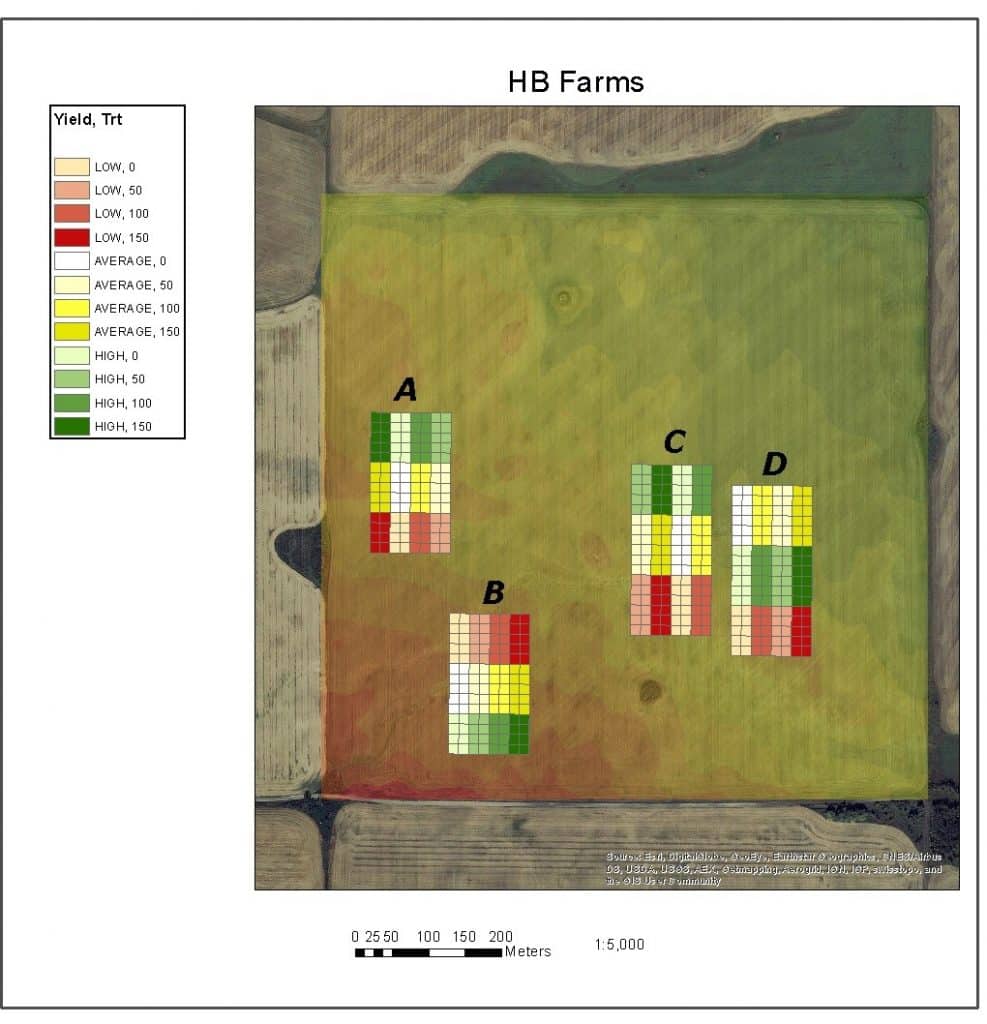
Variable rate technology (VRT) allows different rates of inputs (such as fertilizer, lime, crop protection productsPesticides (herbicides, insecticides or fungicides) used to protect against or reduce the amount of damage caused by weeds, pest insects or plant diseases. More, etc.) to be applied in different areas within a field (or production zones), based on a location-specific prescription map (which identifies particular rates for specific management units or zones). Prescription maps can develop using multiple sources of available information such as soil samples, topography, crop biomass and other field information (ideally over multiple years) that may contribute to or restrict canola yield potential. This can also include yield maps or long-term satellite imagery combined with information on soil types, soil pH patterns, fertility, moisture holding capacity and/or salt content. Additional factors affecting production potential such as weeds, disease, insects can also be considered. Understanding and addressing all limitations within and among management zones will improve the value of the prescription maps.((Fleury, Donna. 2019. Developing variable rate prescriptions. Top Crop Manager (Fertility and Nutrients feature). Available online as of December 2021.))
Variable rate technology is being adopted by some, many farmers in Western Canada didn’t use prescription maps or variable rate technology as of 20171.
Variable rate fertilizer uses VRT to maximize nutrient management systems (and help improve nutrient use efficiencies). It is an advanced way of managing the variability within fields by applying the amount of nutrients required for the differing production zones within the field.((Fleury, Donna. 2019. Developing variable rate prescriptions. Top Crop Manager (Fertility and Nutrients feature). Available online as of December 2021.))
In-season imagery
In-season satellite field imagery is used in crops during the growing season to save time with targeted field scouting, detect variability, and identify potential issues in. Vegetation or biomass imagery is available from several providers and can be very accessible, with imagery uploaded through an app (application) to a smart phone or tablet on a regular basis – almost daily, depending on cloud cover. Satellite field imagery can be verified with in-field ground-truthing efforts. End-of-season imagery can also indicate areas to compare for maturity evaluation and harvest timings.
A 2017 report determined that 28 per cent of growers in western Canada were utilizing in-season satellite imagery or remote sensing technology1. Some of the reasons for the adoption of this may be:
- Imagery filters can pick up vegetation differences in the field which are not visible to the naked eye.
- Imagery can be utilized to navigate problem areas quickly and efficiently, since it allows whole fields to be assessed quickly.
- The imagery gives growers quantitative (objective) data information about the state of their crops.
- Considering areas of similar biomass across the whole field can provides yield forecasting potential.1
In-season application and harvest yield mapping
Yield mapping provides actionable data to help identify problem areas within the field. This is done linked values to various management practices and treatments carried out in specific areas of the field to help improve the production process and influence decisions for future crops. These maps can then be combined with other tools, such as soil test results, to help growers answer questions about their field.
Forty-eight per cent of growers in western Canada had created some yield maps and stored combine yield data, according to a 2017 report1. Examples of how these maps may provide value to these growers include:
- Seeding, in-season product applications and harvest yield maps can help growers evaluate and monitor equipment performance. The layers of information can also be referred to for the precise product application records.
- Harvest yield maps enable effective review and evaluation, or analysis of any variable rate management strategies tested in on-farm trials.
- Performance records can be used for comparison within or between fields (and to help differentiate between productive and unproductive areas of a field.1
Spot spraying
Spot spraying is the precision agriculture tool which uses intelligent sensors to identify and eradicate weeds with targeted bursts of herbicide. The systems can automatically adjust to changing temperature, ambient light, and backgrounds like soil or stubble, to ensure sensor accuracy in all conditions. It can be effective method for applying a pre-seed herbicide (at the start of the growing season), a pre-harvest herbicide to control troublesome weed patches and for post-harvest weed control at the end of the season.((Hart, Lee. 2021. New spot-spray technology in Canada. Grain News. Available online as of December 2021.))
Re-wilding unproductive acres
Once delineating between productive and unproductive (unprofitable) acres and removing the unproductive (unprofitable) acres from production, consider implementing best management practices for re-wilding unproductive acres to maximize their value.3 These include:
- Continuing to manage the weeds, to prevent the proliferation of a weed seed bank.
- Seed the area to perennial forages which increase pollinator habitat and biodiversity. They can also reduce herbicide-resistant weeds, act as buffer zones to meet product label guidelines and manage clubroot issues.
- Focus on more time and effort managing the productive acres and less on the unproductive ones.3
For more insight, check out Galpern’s research on how natural habitats can serve as insect reservoirs, and ways they may contribute to canola yield.
Summary table: Evaluating precision agriculture techniques, features and strategies
Future developments
- Relevant research topics being investigated at Olds College:
- Precision agriculture-related research on the Canola Research Hub:
- Precision agriculture-related research topics being conducted at PAMI
- Dale Steele. 2017. Analysis of Precision Agriculture Adoption and Barriers in western Canada April (final report). Prepared for Agriculture and Agri-Food CanadaAgriculture and Agri-Food Canada is a department of the Government of Canada. More. Available online as of December 2021. [↩] [↩] [↩] [↩] [↩] [↩]
- Jensen, Thomas (IPNI Director, North American Program). 2015. Right Rate, essential in 4R Nutrient Stewardship. 4R News: 22nd Jan 2015 4R Partners, Implement the 4Rs, Right Rate (Winter 2014/15, No. 2). Available online from 4R Nutrient Stewardship as of December 2021. [↩]
- Whetter, Jay. 2020. What to do with acres that always lose money? Canola Digest (January edition). Available online as of December 2021. [↩] [↩]
